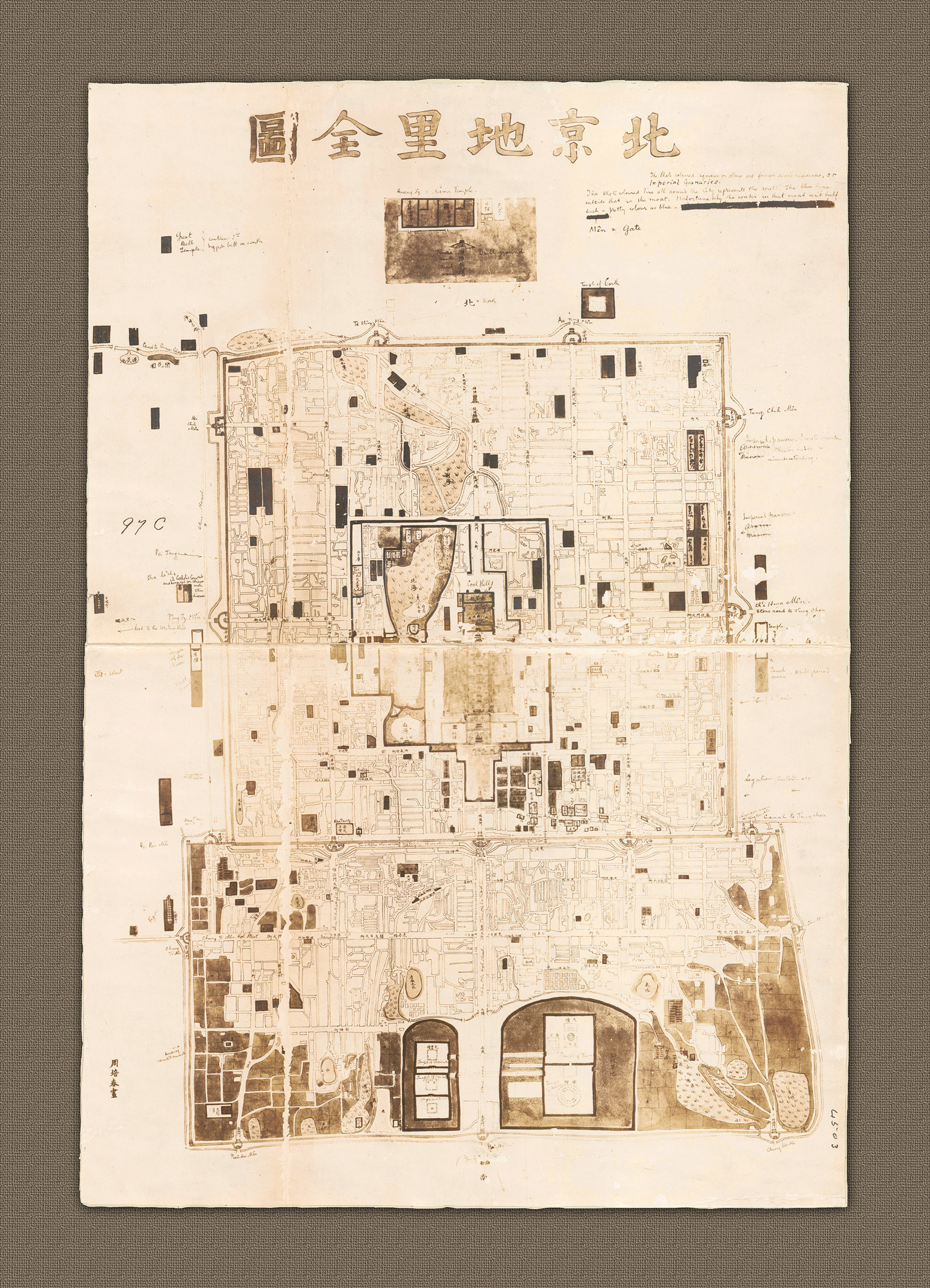C101 - Plan of Old Peking (Beijing)
A beautiful little hand drawn and coloured Plan of Old Peking and the Forbidden City, The plan was in the hands of the British Foreign Office since 1880. How much older than that it is hard to tell but it is typical of the type of information on Peking and China that the British were trying to amass between throughout the mid 19th Century. It likely dates from around 1860.
- c1860
- Unknown
- h24.5" x w18"
- P
Although the Plan is of Chinese authorship the translations and the manner in which side-notes have been added only serve to enhance the appeal and relevance of the work. There is little doubt that, as beautiful it is today, it would likely have been a true work of art when it was made with vibrant colours which have sadly faded to the sepia browns we see today.
The notation on the top right of the Plan states that the slate coloured squares or oblongs are 'foreign devils' residences, or Imperial Granaries. The slate coloured line all around the City represents the wall. The notation goes on to say that the blue line outside that is the moat although 'the water in that moat isn't half such a pretty colour of blue..' Of particular curiosity is that, although the English notations are in English the reference to the 'foreign devils' residences is still included. 'Devils' are what the Chinese at this time used to call foreigners and would either imply a degree of sympathy with the Chinese or something of a mocking sense of humour on the part of the author.
Imperial Granaries, of which there were nine in the city at this time were the storehouses where rice and grain was stored. They were a vital part of the infrastructure of the city, dating from 1409, and would have been extremely valuable. That the author of the notes is clearly confused as to which was which; Granaries or Residencies and indeed the American Mission, further implies that he was perhaps less than familiar with the city he was writing about than he may have been. The American Mission is in fact located along with other Missions, Customs Houses etc, just inside the south wall of the Inner city and marked with an arrow to the right of it.
Included and labelled on the plan are such points of interest as: Coal Hill (now Jingshan Park), behind the Imperial Palace, which was originally constructed from earth that was dug up to make the moat surrounding the Forbidden City; a Catholic Mission and hospital for Chinese with skin diseases; An Anglican mission; Execution ground and (on the West side of the city) a place where the severed heads were displayed!
A further clue that the Plan was intended to be read by a particular person, associate or colleague of the author lies in a small inscription on the street just outside of south of the wall of the Inner City (now between what is Tiananmen West and Tiananmen East along Changan Avenue) which reads 'This is the place we ride. You have a photograph of it'.
Overall, a true sense of history is conveyed in this beautiful, and unique, plan of the old city. It shows real evidence of having been used as a working document event though its original purpose may not have been that. That it ended up in the British Foreign Office is in it'self evidence of its importance.
- Plan of Old Peking (Beijing)


